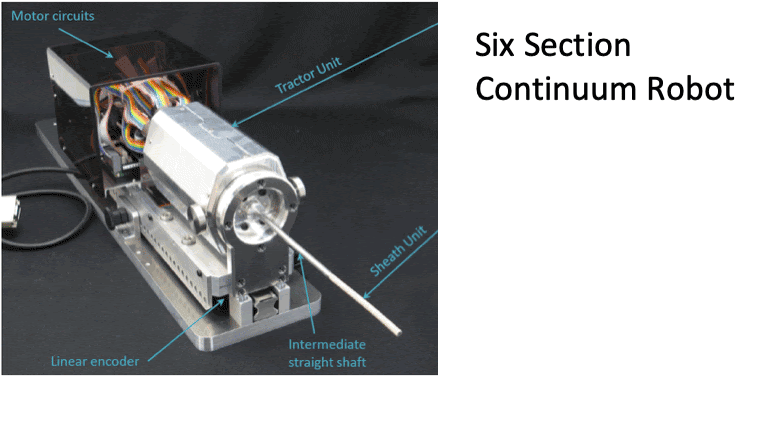
In a combined endoscopic third ventriculostomy (ETV) and endoscopic tumor biopsy (ETB) procedure, an optimal tool trajectory is mandatory to minimize trauma to surrounding cerebral tissue. Ideally, methods for performing this ETV/ETB procedure must ensure adequate visualization of and access to both surgical targets while minimizing the tissue displacement by reducing the number of boreholes required. [Objective] This paper presents wire-driven multi-section robot with push-pull wire. The robot is tested to attain follow-the-leader (FTL) motion to place surgical instruments through a narrow curved path while minimizing the trauma to tissues – utilizing only a single borehole. [Methods] A wire-driven continuum robot with six subsections was developed and a kinematic model to achieve FTL motion was proposed. An initial accuracy test to assess the robot’s ability to attain FTL motion along a set of elementary curved trajectories was performed. We used a hydrocephalus ventricular model created from human subject data to generate five ETV/ETB trajectories and conducted a study assessing the accuracy of the FTL motion along these clinically desirable trajectories. [Results] In the test with elementary curved paths, the maximal deviation of the robot was increased from 0.47 mm at 30 degrees turn to 1.78 mm at 180 degrees in a simple C-shaped curve. S-shaped FTL motion had lesser deviation ranging from 0.16 mm to 0.18 mm. In the phantom study, the greatest tip-deviation was 1.45 mm, and the greatest path deviation was 1.23 mm. The validation study showed that the proposed method can generate effective multi-curved pathways to the surgical targets, with minimal tissue damage, through a single entry point, in a combined ETV/ETB procedure. [Conclusion] We present the application of a continuum robot with FTL motion to perform a combined ETV/ETB procedure. The validation study using human subject data indicated that the accuracy of FTL motion is relatively high and tissue damage is minimized. It is expected that this miniature robot may be useful in combined ETV and ETB.

